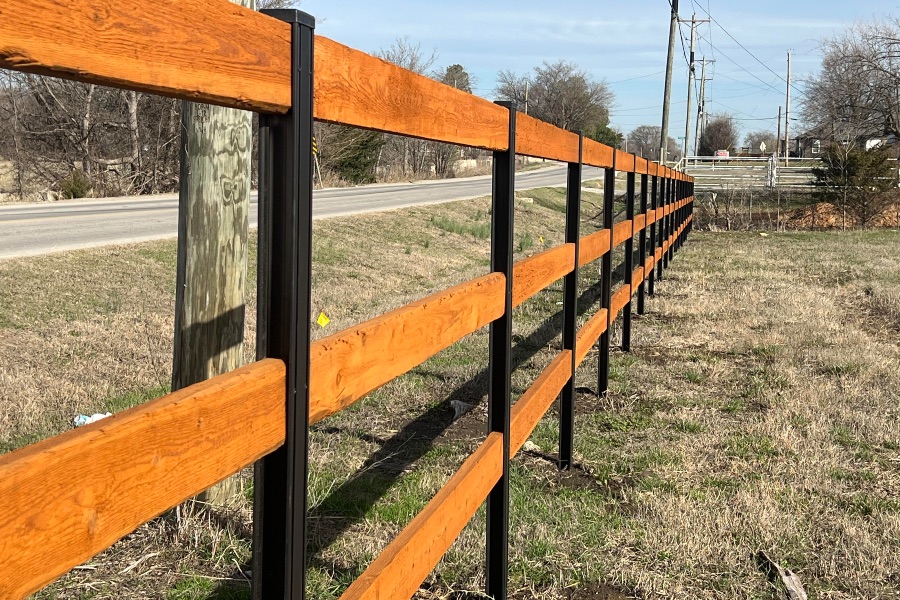All Categories
Featured
Installing a fence is an excellent way to improve your property's visual appeals, safety and security, and privacy. Here's a detailed overview to preparing your home for a fence setup.
You ought to also look for underground utilities, such as water, gas, and electric lines, to avoid damaging them throughout the setup process. Most local utilities use a "call-before-you-dig" service, where they will certainly note the location of energy lines on your residential property.
![]()
Your specialist will certainly additionally aid establish the elevation of the fencing and any kind of unique features, such as gateways or decorative accents. Understanding your goals for the fencing will certainly make certain the final item satisfies your requirements.
![]()
Verdict. Proper preparation is vital to an effective fencing setup. By recognizing local policies, noting residential or commercial property lines, clearing the setup area, making certain equipment gain access to, wrapping up the design and materials, and informing your neighbors, you can set your job up for success. Taking the time to prepare your residential property ensures that the installation procedure is smooth, reliable, and leads to a fence that boosts your home's worth and safety and security.
- Understand Neighborhood Regulations and Permits. Many districts require homeowners to use for an authorization prior to installing a fencing, particularly if the fencing exceeds a certain elevation. Regulations may additionally determine the kind of material you can use, the area of the fencing (whether it's in the front lawn or along a property line), and the height limitations for fences.
- Mark Your Home Lines. It's crucial to know the precise limits of your residential or commercial property before starting the fencing setup. Many fence installment specialists additionally offer building line marking services.
- Clear the Setup Location. A significant component of preparing your residential or commercial property for a fence installment is removing the installment area. Additionally, you should get rid of any type of existing fencings, old messages, or structures that are in the way.
You ought to also look for underground utilities, such as water, gas, and electric lines, to avoid damaging them throughout the setup process. Most local utilities use a "call-before-you-dig" service, where they will certainly note the location of energy lines on your residential property.
- Plan for Devices Accessibility. The installation of a fencing will likely need heavy equipment, such as trucks for hauling materials and tools for excavating openings. If your property has a narrow driveway or limited gain access to points, notify your specialist in advance so they can intend the finest course for delivery and installation.

- Finalize Your Fence Design and Products. The next action is to finalize the layout and material options for your fencing. Take into consideration the objective of your fencing-- whether it's for privacy, safety and security, design, or simply marking boundaries. Discuss your choices with the professional to establish which material is ideal matched for your needs. Common fence materials include wood, vinyl, chain-link, and light weight aluminum, each offering distinct advantages.
Your specialist will certainly additionally aid establish the elevation of the fencing and any kind of unique features, such as gateways or decorative accents. Understanding your goals for the fencing will certainly make certain the final item satisfies your requirements.
- Notify Your Neighbors. It's polite to educate your next-door neighbors beforehand if your fencing will be set up along a shared property line. Having a discussion regarding the fence installment can assist stay clear of misunderstandings or disputes. Discuss the proposed style, timeline, and any possible effect the installation might have on their residential or commercial property. While you don't require your next-door neighbors' authorization to install a fence on your home, keeping them in the loophole is a great way to maintain excellent relationships.
- Get Ready For Post-Installation Upkeep. When your fence is set up, it will certainly require normal maintenance to maintain it in great condition. Depending upon the kind of material, you may require to repaint or discolor the wood, tidy vinyl or aluminum, or apply safety finishes to stop rust. Guarantee you have a prepare for continuous maintenance and inspections to capture any kind of concerns early. Regular upkeep will make sure that your fencing continues to be useful and aesthetically pleasing for years.

Verdict. Proper preparation is vital to an effective fencing setup. By recognizing local policies, noting residential or commercial property lines, clearing the setup area, making certain equipment gain access to, wrapping up the design and materials, and informing your neighbors, you can set your job up for success. Taking the time to prepare your residential property ensures that the installation procedure is smooth, reliable, and leads to a fence that boosts your home's worth and safety and security.
Latest Posts
How Consistent Vehicle Maintenance at Montclare Auto Repair Reduces Costs
Published May 31, 25
1 min read
Uncover Montclare Auto Repair’s Most Popular Services and Why Drivers Trust Them
Published May 26, 25
1 min read
Discover Why Chicago Drivers Prefer Montclare Auto Repair for Trusted Service and Great Savings
Published May 25, 25
1 min read
More
Latest Posts
How Consistent Vehicle Maintenance at Montclare Auto Repair Reduces Costs
Published May 31, 25
1 min read
Uncover Montclare Auto Repair’s Most Popular Services and Why Drivers Trust Them
Published May 26, 25
1 min read
Discover Why Chicago Drivers Prefer Montclare Auto Repair for Trusted Service and Great Savings
Published May 25, 25
1 min read